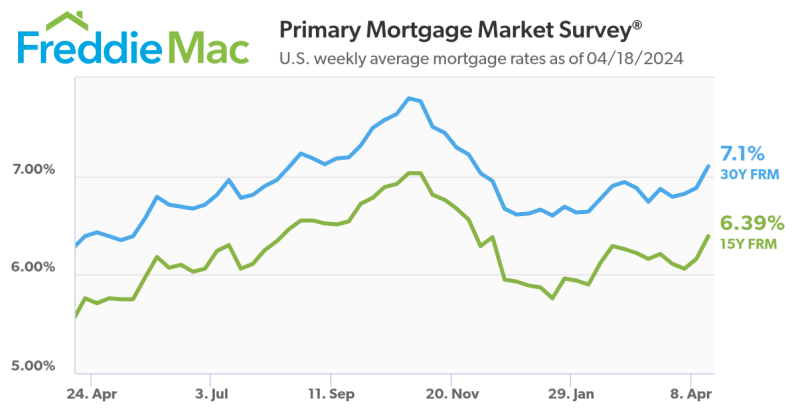Advertisement
The world of credit: From conforming to preferred: Getting a credit score from 620 to 720
Life after Ney-Kanjorski: A status report on the national anti-predatory lending billRoger FendelmanCorporate Compliance,Predatory Lending Laws,Bob Ney,Paul Kanjorski,Ken Lucas,Prohibit Predatory Lending Act,Brad Miller,Melvin L. Watt,Barney Frank
The opinions expressed in the following article do not
represent those of The Mortgage Press Ltd., the National
Associaiton of Mortgage Brokers and NAMB's state
affiliates.
If there's one thing the mortgage industry as a whole can agree
on, it's that complying with the growing number of federal, state
and local anti-predatory lending laws is a nightmare. If you are
responsible for your company's compliance efforts, then in the
now-famous words of our 42nd president, “I feel your
pain.”
A uniform national standard for predatory lending abuse that
preempts all state and local anti-predatory lending laws is needed
to replace the existing mess. Without it, the industry will
continue to be confounded in its attempts to comply, for years to
come. Whether such a law is needed is not at issue; the question is
whether it is possible to create a national standard that actually
eases the compliance burden and also satisfies the pro-consumer
forces. Although it seems like a workable concept, the idea is much
more complex than most people realize and several roadblocks still
exist before any such bill can become the law of the land.
Reps. Bob Ney (R-OH) and Paul Kanjorski (D-PA) co-sponsored HR
1295, known as the Responsible Lending Act of 2005. The bill,
introduced in March, is currently being debated by the House
Financial Services Committee. HR 1295 is similar to the bills
introduced by Rep. Ney (and retired Rep. Ken Lucas) in previous
years, in that it would provide for a single, uniform national
standard for predatory lending that preempts all state and local
anti-predatory lending laws, thereby creating a level playing field
across the country for all lenders.
A tougher bill with no federal preemption provision, the
Prohibit Predatory Lending Act (HR 1182), introduced by Reps. Brad
Miller (D-NC), Melvin L. Watt (D-NC) and Barney Frank (D-MA),
currently awaits direction. However, in a Republican-controlled
Congress, its chances of survival are significantly lower than HR
1295.
While attempts to pass a preemptive national standard in
Congress have failed in the past two legislative sessions, some
believe that HR 1295 may become law in 2005. Perhaps the strongest
evidence in support of this is the increasing acceptance of the
need for preemption, highlighted by the Mortgage Bankers
Association (MBA) Chair Regina Lowries testimony in late May, which
focused attention on the need for such a law.
However, many industry experts contend that the current bill,
like its ill-fated predecessor, doesn't have the widespread support
it needs for passage.
Although the MBA supports the bill, support from some industry
trade groups is noticeably missing; in fact, many politicians and
industry leaders are opposed to federal preemption.
Part of this may be due to the political fallout that could be
strewn on congressional candidates as we move into the 2006
election cycle. House Democrats might try to spin HR 1295 against
Republicans that “cave in” to industry demands by
passing what they view as an industry-friendly bill.
Outside the Beltway, many in the industry believe the bill's
passage would actually create more problems than it attempts to
solve. For example:
†The standards in HR 1295 represent a tough compromise for
the industry. The bill has provisions that the industry wants, such
as limitations on assignee liability, but it also has tough
provisions that the consumer rights advocates want, such as tighter
thresholds. Like all compromises, few are completely satisfied with
the outcome.
†Currently, some states have no measurable predatory laws,
and other states have laws that mirror the relatively easy Home
Ownership Equity Protection Act (HOEPA) thresholds. Together, these
total nearly half the states in the country. With the passage of HR
1295, lenders would have to apply the bill's tougher standards
across all 50 states. So, for the first time, purchase-money and
other transaction types would be covered in all states, in addition
to refis, meaning, virtually all transactions would be subject to
thresholds, and the thresholds are lower. This would have a
profound impact on profitability and the ability to lend for many
national and regional lenders who currently face substantial
limitations only in the “tough” states. It could affect
local lenders even more.
†National banks, which collectively represent a powerful
force in the industry, would be the big losers under the bill, as
they would be required to deal with its much tougher compliance
requirements compared to HOEPA.
†The bill leaves the enforcement powers to the individual
states. The result could be 50 different interpretations of the
same law or, more likely, 50 different levels of enforcement. Some
states, including those with well-funded banking departments, would
be more vigilant than others.
Unfortunately, there are additional hurdles:
†Even if the bill were to pass in 2005, the steps that
need to take place before the law could be enforced could take
years. They include even more public hearings and the development
of interpretive regulations by the Federal Reserve and a likely
grace period before the law goes into effect. The law's preemptive
effect on state and local laws during this period is unknown.
†Some states won't let the federal government strip away
their existing predatory protections without a fight, and any
challenges to the federal government's ability to make such a law
could further delay implementation. For example, New York Attorney
General (and 2006 gubernatorial candidate) Eliot Spitzer (D) has
vowed to fight any national law that preempts New York's predatory
lending law, despite settled case law going back to Marbury v.
Madison, the landmark 1803 U.S. Supreme Court decision that held
that the court's power of judicial review gives it the right to
strike down any law that is found to be in direct conflict with the
Constitution.
The bottom line is that even if you are crossing your fingers
and hoping that HR 1295 passes this year, don't hold your breath.
While a preemptive national anti-predatory lending standard would
be a much-needed fix for the industry and ultimately for consumers,
the current attempts to create one might not have the backing
needed to make it a reality in 2005 or 2006. With too many
unresolved issues, a lack of support from the industry as a whole
and an upcoming election cycle, the bill may once again wither on
the vine. Now is certainly not the time to shelve your
anti-predatory compliance activities.
In the end, a new national standard may one day preempt state
and local laws, condensing the anti-predatory lending compliance
function to a single set of rules and giving compliance personnel
around the country a reason to rejoice. However, any such law will
lower existing thresholds and include purchase-money and other
transaction types not covered under current law. As this would
represent a substantial number of any lender's transactions, a
viable strategy to deal with anti-predatory lending compliance will
always be an important part of their origination process.
Roger Fendelman is a compliance attorney, specializing in
federal and state fair lending laws. He currently serves as vice
president of compliance for Interthinx. He may be reached
at (800) 216-7062 or e-mail [email protected].
About the author





